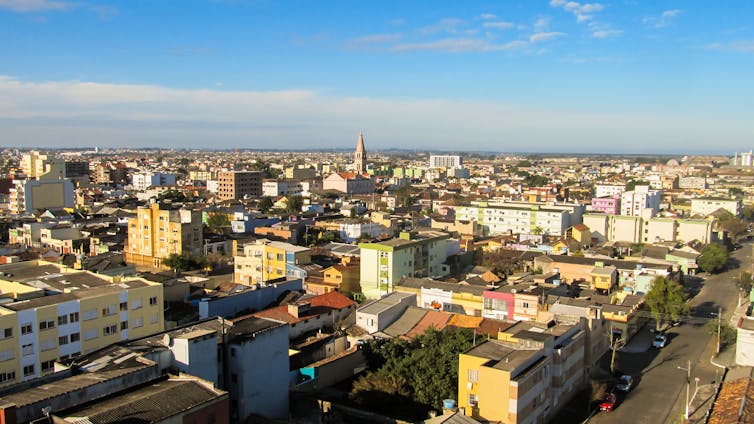Childhood trauma may play a key role in many later psychiatric disorders. However, most of what we know about the impact of trauma exposure comes from research with adults.
Less is known about the impact of childhood trauma on teenagers. It is still unclear whether they show the same range of mental health problems as adults or have difficulties mainly in some specific areas – such as having mood problems like depression. Younger children have been investigated even less.
We carried out research looking at data from 4,231 children born in 2004 in the city of Pelotas, South Brazil. These children were tracked from birth to age 11 years to collect data about their exposure to traumatic events and rates of common mental health disorders.
We found that more than a third of the children were exposed to trauma by the time they were 11. This is more than double what was observed in a similar group of children aged 10-11 years from the UK.
Most studies on childhood trauma have been conducted in affluent countries such as the USA or the UK. However, almost 90% of the world’s children live in poorer countries, sometimes referred to as low- and middle-income countries.
In these parts of the world, violent events such as youth homicide are more common. We know little about the amount and types of trauma experienced in these social and cultural contexts and their mental health impacts on children.

Helissa Grundemann/Shutterstock
Children exposed to trauma in our study showed higher rates of a broad range of mental health problems, including anxiety, mood disorders, ADHD or hyperactivity, and disruptive disorders – also known as “behaviour problems”. For instance, 6% of 11-year-olds who had experienced trauma had an anxiety disorder, compared to 3.3% of children who had not experienced trauma.
These associations between trauma and mental disorder were not explained by the children having mental health problems at an earlier age. They were also not explained by other factors, such as lower socioeconomic status, having a mother with mental health problems, or the child’s mother smoking or drinking alcohol during pregnancy.
There are different types of trauma. Many traumatic experiences involve events inflicted by another person, which is known as interpersonal trauma. This can mean being the victim of physical violence or assault, experiencing physical or sexual abuse within the family, sexual assault or being exposed to domestic violence.
However, children may also experience other types of non-interpersonal trauma, which includes severe accidents not perpetrated by a person (such as an accidental car crash), and indirect trauma – witnessing or learning about harm to a loved one.
Impact on mental health
Our study looked at the impact of interpersonal and non-interpersonal traumas and found that both were potentially harmful to children’s mental health. Children exposed to these types of trauma showed higher rates of anxiety, mood, ADHD or hyperactivity, and disruptive disorders. Nonetheless, interpersonal trauma might be particularly important in relation to children’s mental health problems. In our study, children who experienced interpersonal trauma were almost twice as likely to show some disorders, such as behaviour problems.
We should be aware that traumatic experiences in childhood are common and can lead to a broad range of mental health problems – not just post-traumatic stress disorder (PTSD), the psychiatric disorder most often talked about when discussing trauma exposure.
More needs to be done to reduce the likelihood of children experiencing traumatic events. For example, educating parents not to use corporal punishment could reduce children’s exposure to violence and maltreatment.
The city of Pelotas launched an intervention programme in 2017 to reduce violence in the community. Its approaches include targeting schools to decrease the chance of children engaging in violence. Initiatives like this have the potential to reduce childhood trauma and its associated mental health problems, bringing about major societal benefits.




